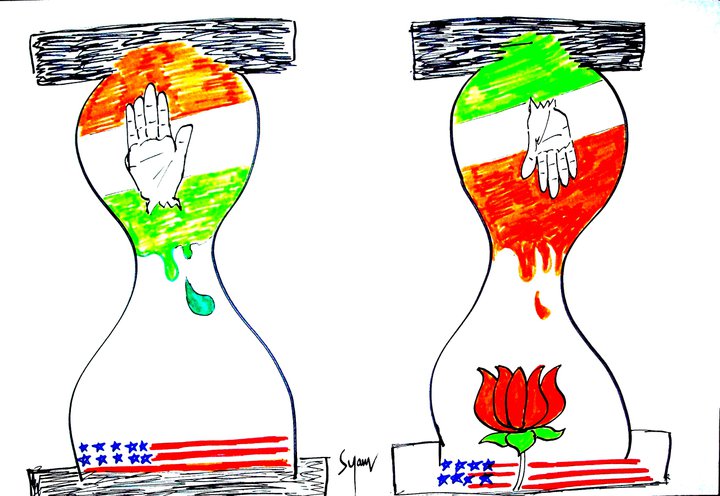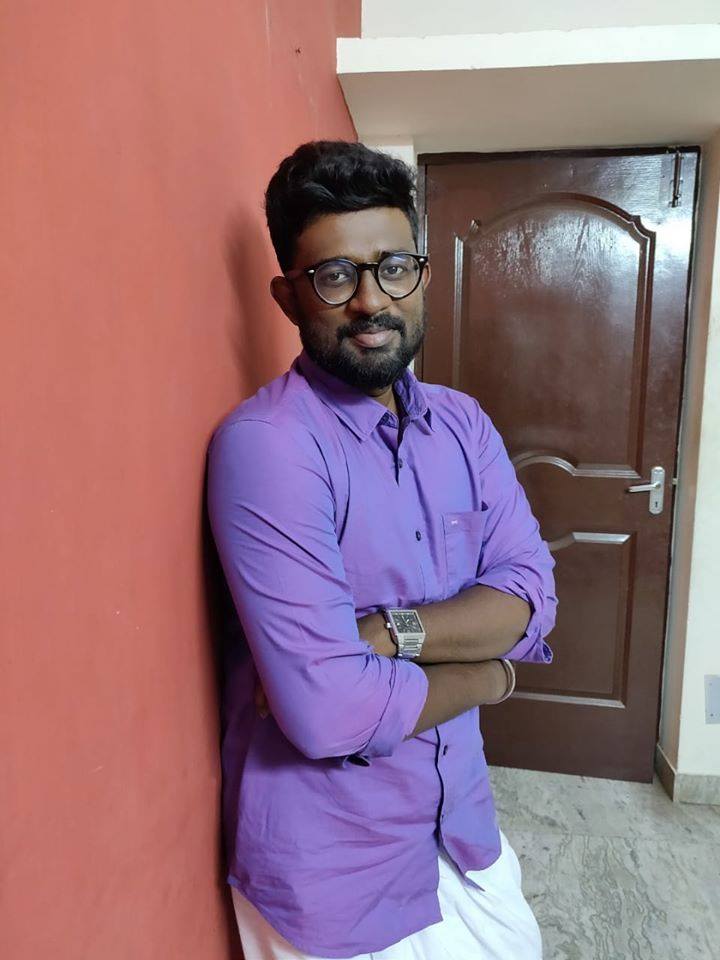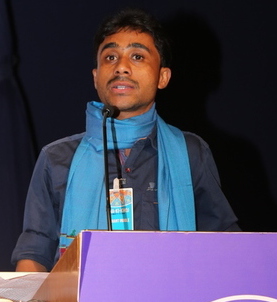Dr. Manisha Bangar and Dr. Anuradha Bele
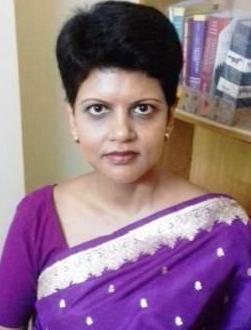
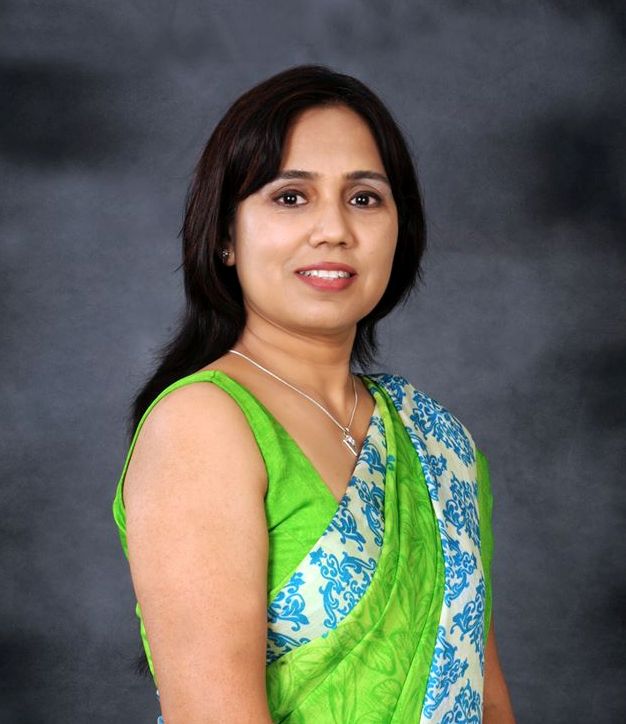 Babasaheb has pointed out that religion has gone through four stages where originally it was for salvation of one’s soul, then it became a moral compass for maintaining brotherhood, but in its third and fourth stage, it became a practice of worshipping those who performed miracles. India, a country born by the transfer of power from the Britishers to the upper castes in 1947, in wanting to go back to a mythical glorious Hindu past, has no choice but to keep manufacturing fictitious miracle-performing gods to distract the Bahujan from looking too closely at this myth.
Babasaheb has pointed out that religion has gone through four stages where originally it was for salvation of one’s soul, then it became a moral compass for maintaining brotherhood, but in its third and fourth stage, it became a practice of worshipping those who performed miracles. India, a country born by the transfer of power from the Britishers to the upper castes in 1947, in wanting to go back to a mythical glorious Hindu past, has no choice but to keep manufacturing fictitious miracle-performing gods to distract the Bahujan from looking too closely at this myth.
The latest ruse is the announcement that Padma Awards are to be People’s Award, where nominations, including self-nominations were invited from the unsung heroes who work at the grassroots. The nominations closed on 15th September. This move is a typical upper caste strategy of campaigning for change as long as the caste privilege and graded inequality is undisturbed. The awards are three in number with lowest being the Padma Shree, then Padma Bhushan and the highest being Padma Vibhushan which is also the second highest civilian award.
If we look at the history of state awards, they follow the precedent set in 1878 by the reward of the ‘Most Eminent Order of the Indian Empire’ to officers who served British India well. It was created in commemoration of Queen Victoria’s ascension as Empress of India. Said to be designed by the then Crown Jewellers, R.S. Garrad & Co, the medal had a lotus with letters of the word India written on petals; this design of the medal is continued in the Padma award. The Indian awards were constituted in the 1950s which was an era of consolidation of power in the hands of upper castes, led by the North Indian Brahmins, through entrenching themselves in the institutions transferred to them by the British. This was the time when the first President and the first Prime Minister of India were washing the feet of Brahmins at Kashi. The Congress was unable to find a strong foothold in the South and hence state reorganisation was becoming an important tool of gerrymandering. To appease and placate the disgruntled upper caste, these awards were instituted and no wonder, that the highest civilian award, the Bharat Ratna, was given to three Tamil Brahmins, from the land where Periyar’s Self Respect movement was causing massive upheavals against them. The 6th Buddhist Council in Rangoon was held in 1954 where Babasaheb, also India’s Constitution maker, was invited by the Burmese government and the resurrection of Buddhist awakening here was reaching fruition through him. Incidentally, Babasaheb was only honoured with the Bharat Ratna in 1990, post which India abandoned the pretence of socialism and embraced capitalism overtly.
Looking at the Padma awardees from 1954 till 2021, we can see a few trends.Irrespective of the Congress or the BJP, just post the election years, the number of awardees goes up as if to acknowledge their contribution for helping the ruling upper caste party win and maintain status quo. In the past decade or so, the cap of total only 120 awardees had been broken, with 93, 31, 10 Padma Shri, Padma Bhushan and Padma Vibhushan respectively in 2009, then again in the year 2010 ( 80,43,6), 2011 (85,31,12), 2014 (100,24,2) with these numbers peaking in 2020 (118, 16,7).
Typically, the bauble of Bharat is the Brahmin, with this 3% population being showered with 54.16% of the 48 Bharat Ratnas.If we add Kayasthas and Khatris to this list, then the percentage shoots up to 66.67%. The Muslims, who constitute 18% of India’s population, have 10.41% representation in the awards, the Muslim awardees can also be classified as upper castes, they call themselves Arab Pashtun descendants. The only exception is Ustad Bismillah Khan, who came from a former untouchable caste. The interesting Shudra to have made the cut was whom Babasaheb called ‘the henchman of Gandhi’, to be awarded along with two Brahmins, exactly a year after Babasaheb’s Bharat Ratna, as if to pit that Shudra angst against us. Two Shudras have been awarded, that is 4% representation for the 52% population. Two women have been honoured, both the women are singers, who come from temple entertainer mothers, Brahmin father backgrounds. 3 people from the Scheduled Castes have been awarded, no ST person has been recognised yet. However, 2 foreigners have been Bharat Ratnas.
Focussing on the 321 Padma Vibhushans awarded till date, we see this pattern being repeated. 42.67% of the winners are Brahmins. If we add Kayasthas and Khatris to this, then it rises to 55.76% of the awards. After adding upper castes like Nair, Reddy, Kammas, Jats , Agrawals, Maheshwaris etc. the percentage rises to 72.27%.The Muslims awardees are at 7.47% with most claiming Arab or Brahmin/upper caste descent like sons of Qazis or zamindars.Only exception Padma Vibhushan was a Qureshi Muslim, who was the founding secretary of the BJP. 10 (3%) of those awarded were Christians, 3 of them Syrian Christians. 0.93% of awardees (3/321) were from Scheduled Castes, SCs form 16% of the population of this country. 3 persons (0.93%) from the Scheduled Tribes were awarded, they from 8.2% of people of India. OBCs awarded are at 4.36%. 33 women have been awarded, most of them Brahmins. Interestingly, 12 foreign citizens are Padma Vibhushans. It will be thought-provoking to check the citizenships of the upper caste who dominate these awards.
The seven Padma Vibhushans awarded in 2021 are to two foreigners, one a Telugu Brahmin and one Bunt earlier awarded Padma Bhushan. A Muslim scholar of Pathan descent who had received a Padma Bhushan in 2000 was also awarded. A Brahmin archaeologist who strengthened the Ram Temple theory of Ayodhya and was awarded Padma Vibhushan in 2000 was conferred the Padma Vibhushan. A Vaishya caste sculptor who has carved stone statues for the Mahayana school of Buddhism and has received the Padma Shri in 1988 was awarded the Padma Vibhushan.
1281 Padma Bhushans and 3221 Padma Shrees have been conferred till date. These awards will also follow the trend of the upper caste patting the backs of the upper castes.
Moreover, these awards are a family affair. For eg: Dr.John Matthai received the order of the British Empire (CIE) in 1934, the Padma Vibushan in 1959, his wife the Padma Shree in 1954. Vergese Kurien is Matthai’s nephew,he received the Padma Shree in 1965, Padhma Bhushan in 1966 and Padma Vibhushan in 1999. Similar is the case of John Mathai’s successor in the Indian Cabinet,SirC.D.Deshmukh who received the OIE in 1937; knighthood from British Empire in 1944 andPadma Vibhushan, 1975; his wife, Durgabai Deshmukh was directly awarded Padma Vibhushan in 1975. Bhagwan Das (Agrawal) received the Bharat Ratna in 1955, his son the Padma Vibhushan in 1957, similar to Sarvapalli Radhakrishnan(Bharat Ratna, 1954; British Order of Merit, 1963) and his son, Dr.Sarvepalli Gopal (Padma Vibhushan, 1999).
These awards are akin to an obstacle course that one has to tackle. For eg: Bachchan family, starting with Harivansh Rai Srivastava (Bachchan)(Padma Bhushan 1976), has total 6 Padma awards, gradually moving from Padma Shri (1984- Amitabh, 1992-Jaya Bachchan, 2009- Aishwarya) to Padma Bhushan ( Amitabh- 2001) and Padma Vibhushan (Amitabh-2015) . Sachin Tendulkar managed to climb up to the Bharat Ratna (2014) after a Padma Shri(1999) and Padma Vibhushan (2008). However, Dhirubhai Ambani was directly awarded the Padma Vibhushan posthumously in 2016. Kangana Ranaut, who is vocal supporter of BJP and Uttar Pradesh’s brand ambassadorfor an industrialisation scheme, was conferred the Padma Shri in 2020. Incidentally, Kangana’s late grandfather, Sarju Ram, was a Congress MLA from the Gopalpur constituency of Mandi district.
Further, most of the awardees are those who strengthen the idea of the Hindu rashtra, like Bharat Ratna and Padma Vibhushan to Nanaji Deshmukh, one of the architects of anti-Emergency movement and ex-managing editor of the upper caste mouthpieces like the Panchjanya, whose family is currently partnering with Anand Bazar Patrika (ABP) news channel, which also owns The Telegraph newspaper.
Surprisingly, the Padma awards carry no state support, they are just a state identification of individual contribution or acknowledgement. In 2019, 12 farmers were awarded for helping conserve indigenous seed varieties, for assessing soil quality and promoting organic farming. However, since there is no monetary help to them nor is there a mechanism to learn from these innovations and introduce a progressive change throughout our land mass, we fail to usher in modernity from the grassroots starting with a sector which employs 62% of the citizens. These awards try to shift accountability from the state institutions onto individuals and point to the failures of the institutions to fulfil their obligations to treat all its citizens as equals. The Constitution has guaranteed us rights, but as Babasaheb pointed out, democracy is only the topsoil on this deeply caste ridden society.
The Padma awards, like any colonial recognition, serve the agenda of those in power. But this land is of the one who had no agenda except to be the marga-data for the welfare of all. The state still continues to lean upon the token of the Buddha, represented in ancient times by the symbol of lotus, the one unaffected by any ripples, the Happy One.
(A version of this article appeared in National India News online portal on 10th November 2021, titled as Padma Awards and The Bahujans- On A Deeper Look)
~~~
Dr Manisha Bangar is a leading organizer of Mulniwasi Bahujans of India (the Indigenous majority population). Currently serving as National Vice President of BAMCEF (Backward and Minority Communities Employees Federation), she is former National Vice President of Mulniwasi Sangh and National President of Mulniwasi Mahila Sangh the mass-based offshoot wings of BAMCEF.
A good orator, freelance writer and poetess she has continued to speak for more than a decade at Universities, Civil/Human Rights and Phule Ambedkarite Organizations, both Nationally and Internationally (USA, UK, Europe and Middle East) including the United Nations on issues of Caste, Gender Equality, Health and Education rights, Comparative Religious thought and Phuley Periyaar Ambedkar Ideology.
She is also a super specialised, practising Hepatologist in Hyderabad, Telangana, India.
Dr Anuradha Bele is an electronics engineer and a veterinary doctor with a degree in management. She can be reached for references at anuradha.bele@gmail.com


